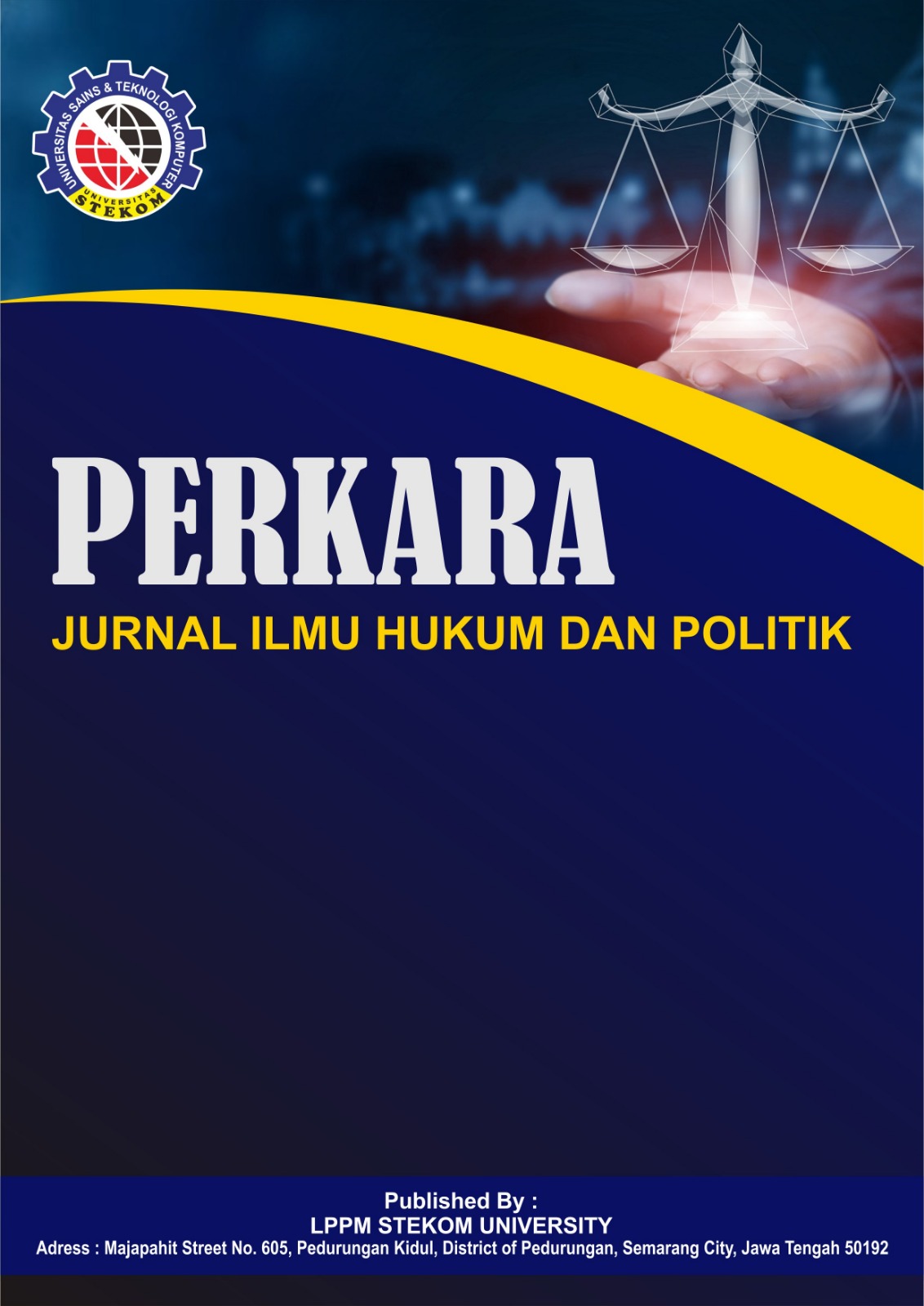Pengaruh Media Sosial terhadap Pola Kejahatan di Era Digital: Studi Kriminologi dengan Pendekatan Netnografi
DOI:
https://doi.org/10.51903/perkara.v3i1.2353Keywords:
Cybercrime, Social Media, Digital Fraud, Law Enforcement, Regulatory FrameworkAbstract
The rapid development of social media has transformed digital crime patterns, enabling financial fraud, exploitation, and radicalization to spread more efficiently. In Indonesia, cybercrime cases have increased by 60% over the past five years, yet law enforcement remains ineffective due to the complexity of digital crime and limited regulatory enforcement. This study aims to analyze how social media facilitates cybercrime, the evolving modus operandi of criminals, and the effectiveness of existing legal frameworks. This research employs a netnographic approach, combining qualitative content analysis of online interactions with secondary data from law enforcement reports. Findings indicate that digital fraud cases have risen by 85% in the past three years, with cryptocurrency-related scams causing losses of IDR 5.2 trillion. Cyberbullying and defamation cases have surged by 60% since 2018, while only 22% of reported cybercrimes have been legally processed, with a conviction rate of just 6%. These figures highlight significant gaps in digital forensic capabilities and cross-sector collaboration. This study contributes to understanding the role of social media in shaping cybercrime and provides policy recommendations to enhance crime prevention strategies. Strengthening legal frameworks, improving law enforcement technology, and fostering cooperation between stakeholders are essential to addressing cybercrime in the digital era. Future research should focus on comparative legal studies and the role of artificial intelligence in cybercrime detection
References
Andriyanto, T. (2022). Komunikasi Termediasi Penipuan dengan Modus Business Email Compromise. Jurnal Riset Komunikasi, 5(2), 220–243. https://doi.org/10.38194/jurkom.v5i2.627
Bacaj, C., Wang, K., Zhang, A., & Charmaraman, L. (2024). Review of Current Trends in LGBTQ + Youth and Social Media: Implications for Mental Health, Identity Development, and Civic Engagement. Current Pediatrics Reports, 13(1), 1–8. https://doi.org/10.1007/s40124-024-00338-2
Button, M., Hock, B., Bae, J., Chol, S., & Koh, S. (2025). Policing Cross-Border fraud ‘Above and Below the Surface’: Mapping Actions and Developing a More Effective Global Response. Crime, Law and Social Change, 83(1), 1–27. https://doi.org/10.1007/s10611-024-10186-2
Carroll, F., Adejobi, J. A., & Montasari, R. (2022). How Good Are We at Detecting a Phishing Attack? Investigating the Evolving Phishing Attack Email and Why It Continues to Successfully Deceive Society. SN Computer Science, 3(2), 1–10. https://doi.org/10.1007/s42979-022-01069-1
Cross, C., & Layt, R. (2022). “I Suspect That the Pictures Are Stolen”: Romance Fraud, Identity Crime, and Responding to Suspicions of Inauthentic Identities. Social Science Computer Review, 40(4), 955–973. https://doi.org/10.1177/0894439321999311
Diaz Ruiz, C., & Nilsson, T. (2023). Disinformation and Echo Chambers: How Disinformation Circulates on Social Media Through Identity-Driven Controversies. Journal of Public Policy and Marketing, 42(1), 18–35. https://doi.org/10.1177/07439156221103852
Faraz, A., Ahsan, F., Mounsef, J., Karamitsos, I., & Kanavos, A. (2024). Enhancing Child Safety in Online Gaming: The Development and Application of Protectbot, an AI-Powered Chatbot Framework. Information (Switzerland), 15(4), 233. https://doi.org/10.3390/info15040233
Harkin, D., & Whelan, C. (2022). Perceptions of Police Training Needs in Cyber-Crime. International Journal of Police Science and Management, 24(1), 66–76. https://doi.org/10.1177/14613557211036565
Hollewell, G. F., & Longpré, N. (2021). Radicalization in the Social Media Era: Understanding the Relationship between Self-Radicalization and the Internet. International Journal of Offender Therapy and Comparative Criminology, 66(8), 896–913. https://doi.org/10.1177/0306624x211028771
Izzah, N., Mahdi, M. A., Julkarnain, D., Rato, D., & Ohoiwutun. (2024). Perlindungan Hukum Terhadap Pemberdayaan Informasi dari Ancaman Buzzer: Konsepsi Pembatasan Akun Media Sosial. Jurnal ISO: Jurnal Ilmu Sosial, Politik Dan Humaniora, 4(2), 12–12. https://doi.org/10.53697/iso.v4i2.1908
Jain, A. K., & Gupta, B. B. (2022). A Survey of Phishing Attack Techniques, Defence Mechanisms and Open Research Challenges. Enterprise Information Systems, 16(4), 527–565. https://doi.org/10.1080/17517575.2021.1896786
Jungert, T., Badenes-Ribera, L., Dailey, S. F., & Roche, R. R. (2025). The SHIELD Framework: Advancing Strength-Based Resilience Strategies to Combat Bullying and Cyberbullying in Youth. International Journal of Environmental Research and Public Health, 22(1), 66. https://doi.org/10.3390/ijerph22010066
Karpova, A., Savelev, A., Vilnin, A., & Kuznetsov, S. (2022). Method for Detecting Far-Right Extremist Communities on Social Media. Social Sciences, 11(5), 200. https://doi.org/10.3390/socsci11050200
Klopp, J. M., Trimble, M., & Wiseman, E. (2022). Corruption, Gender, and Small-Scale Cross-Border Trade in East Africa: A Review. Development Policy Review, 40(5), 1–21. https://doi.org/10.1111/dpr.12610
Krishnan, L. P., Vakilinia, I., Reddivari, S., & Ahuja, S. (2023). Scams and Solutions in Cryptocurrencies—A Survey Analyzing Existing Machine Learning Models. Information, 14(3), 171. https://doi.org/10.3390/info14030171
Langlois, F., Rhumorbarbe, D., Werner, D., Florquin, N., Caneppele, S., & Rossy, Q. (2022). International Weapons Trafficking from the United States of America: A Crime Script Analysis of the Means of Transportation. Global Crime, 23(3), 284–305. https://doi.org/10.1080/17440572.2022.2067847
Li, C., & Li, Y. (2023). Factors Influencing Public Risk Perception of Emerging Technologies: A Meta-Analysis. Sustainability, 15(5), 3939. https://doi.org/10.3390/su15053939
Lusthaus, J., Kleemans, E., Leukfeldt, R., Levi, M., & Holt, T. (2023). Cybercriminal networks in the UK and Beyond: Network structure, criminal cooperation and external interactions. Trends in Organized Crime, 10(2), 364–387. https://doi.org/10.1007/s12117-022-09476-9
Mehta, H., & Passi, K. (2022). Social Media Hate Speech Detection Using Explainable Artificial Intelligence (XAI). Algorithms, 15(8), 291. https://doi.org/10.3390/a15080291
Mensah, R. O., Mensah, P., & Opoku, D. (2023). Experiences and Perceptions of Cybercrime Victims in Ghana: The Perspective of digital Consumers of Agricultural Produce. Cogent Education, 10(2), 2285623. https://doi.org/10.1080/2331186x.2023.2285623
Moore, D. M. (2024). Algorithmic Exploitation in Social Media Human Trafficking and Strategies for Regulation. Laws, 13(3), 31. https://doi.org/10.3390/laws13030031
Mughaid, A., Obeidat, I., AlZu’bi, S., Elsoud, E. A., Alnajjar, A., Alsoud, A. R., & Abualigah, L. (2023). A Novel Machine Learning and Face Recognition Technique for Fake Accounts Detection System on Cyber Social Networks. Multimedia Tools and Applications, 82(17), 26353–26378. https://doi.org/10.1007/s11042-023-14347-8
Pawlicka, A., Tomaszewska, R., Krause, E., Jaroszewska-Choraś, D., Pawlicki, M., & Choraś, M. (2023). Has the Pandemic Made Us More Digitally Literate?: Innovative Association Rule Mining Study of the Relationships Between Shifts in Digital Skills and Cybersecurity Awareness Occurring Whilst Working Remotely During the COVID-19 Pandemic. Journal of Ambient Intelligence and Humanized Computing, 14(11), 14721–14731. https://doi.org/10.1007/s12652-022-04371-1
Prabhu Kavin, B., Karki, S., Hemalatha, S., Singh, D., Vijayalakshmi, R., Thangamani, M., Haleem, S. L. A., Jose, D., Tirth, V., Kshirsagar, P. R., & Adigo, A. G. (2022). Machine Learning-Based Secure Data Acquisition for Fake Accounts Detection in Future Mobile Communication Networks. Wireless Communications and Mobile Computing, 2022(1), 6356152. https://doi.org/10.1155/2022/6356152
Rindestig, F. C., Gådin, K. G., Jonsson, L., Svedin, C. G., Landberg, Å., & Dennhag, I. (2025). A Latent Class Analysis of Technology-Facilitated Sexual Violence: Associations to Other Victimizations, Psychiatric Symptoms, and Gender. Child Abuse & Neglect, 161, 107309. https://doi.org/10.1016/j.chiabu.2025.107309
Schroeder, E., Edgemon, T. G., Aletraris, L., Kagotho, N., Clay-Warner, J., & Okech, D. (2022). A Review of Prevalence Estimation Methods for Human Trafficking Populations. Public Health Reports, 137(1), 46S-52S. https://doi.org/10.1177/00333549211044010
Su, Y. W., Shih, C. H., & Yang, T. J. O. (2024). Investment Fraud Cases Study in Chinese Context of Instant Messaging Software. Procedia Computer Science, 246, 391–402. https://doi.org/10.1016/j.procs.2024.09.418











4.png)
